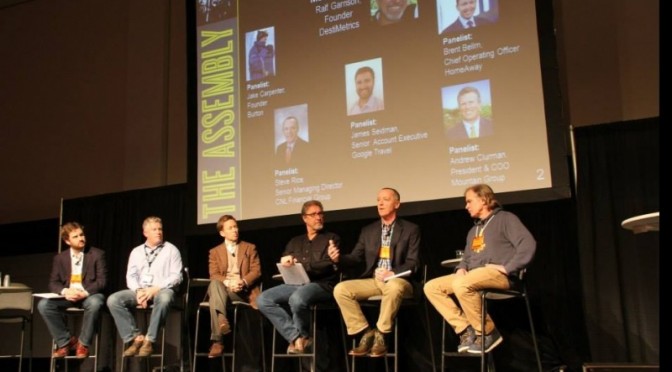Denver, CO – Mountain lodging activity and snow sports retail equipment sales are up, while skier and snowboarder visits for the 2014-15 ski season are on pace to match last season’s tally of 56. 2 million, according to industry executives who convened as part of The Assembly 2015 presented on Wednesday at Snowsports Industries America’s (SIA) annual Snow Show held at the Colorado Convention Center in Denver.
Nearly 400 mountain travel and tourism executives from destinations spanning North America attended The Assembly 2015, a one-day forum that presents both a fact-based and knowledge-based assessment of the current business climate, and identifies existing and emerging opportunities for growth in the mountain travel industry. In the opening State of the Industry general session, association executives and industry researchers presented season-to-date figures on retail sales, mountain lodging revenues and reservations, and ski and snowboard visitation and demographic trends.
Revenues at 19 mountain resorts in six states are up 15 percent over last season while occupancy is up 9 percent, according to Tom Foley, director of operations for Denver-based DestiMetrics. The data reflect aggregated occupancy based on reservations already made through April. Revenue and occupancy have experienced gains every month from November through April, with double-digit percentage increases in February and April. This year Easter is on April 5.

“As mountain resorts head into the prime winter months, the data is showing continued strength in the destination tourism segment of the industry,” said Ralf Garrison, director of DestiMetrics. “The perception of good early conditions and continued positive economic news is creating the potential for some resorts to surpass the record-setting 2007-08 season.”
The snow sports retail market set a record holiday selling season, posting $2.2 billion in sales by the end of December, according to Kelly Davis, research director at SIA. Equipment sales were up 6 percent to $541 million, apparel sales were up 7 percent to $985 million, and accessory sales were up 15 percent to $734 million during that same time period.
Regionally, consistent snowfall through the first of the year at most Rocky Mountain resorts has helped boost a 15.4 percent increase in revenues and a 9 percent increase in occupancy compared to last year as of Dec. 31. Total skier and snowboarder visits at 21 Colorado resorts during the first part of the season were one percent shy of last year’s record pace, according to Melanie Mills, president and CEO of Colorado Ski Country USA (CSCUSA). The data reflects visits from Oct. 17 through Dec. 31, 2014.
Nathan Rafferty, president and CEO of Ski Utah and Parker Riehle, president of Ski Vermont both report “solid” visitation in their respective states. Michael Berry, president of the National Ski Areas Association, said continued drought conditions in California have the season on track to match last season’s decreased visitation numbers.
Bill Jensen, a former executive with resort operators Intrawest and Vail Resorts, however warned that as the industry becomes more stratified, an increasing number of ski resorts face an uncertain future. Dividing the U.S. resort industry into four categories — top tier resorts with increasing business results that number around 45, some 150 that are maintaining the status quo, another 150 that are barely hanging on and a final 150 that are seeing a sharp decline in revenues and little investment — Jensen expressed doubt that many in the latter two categories that rely too heavily on snowfall will survive.
Speakers also cautioned that the industry needs to do more to attract the interest of Millennials, that demographic ages 14 to 32 that represents the future of the ski industry. Participation in skiing and snowboarding by Millennials has dropped from 45 percent of all skier visits a few years ago to 40 percent today, averaging only five skier visits per year per person in that category. This decline comes as skier visits by members of Generation X remain flat and Baby Boomers are dropping out of skiing as they age.

